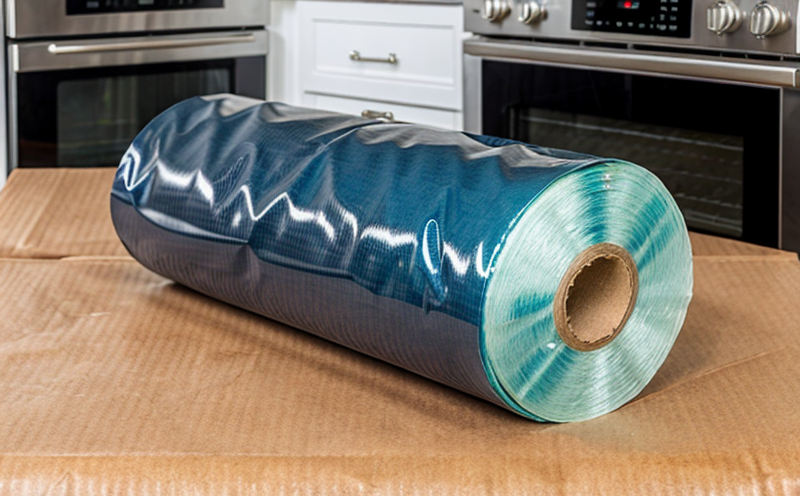NF EN ISO 846 Microbial Resistance Testing of Plastic Household Covers
The NF EN ISO 846 standard outlines the testing procedures for determining the microbial resistance of plastic household covers. This test is crucial in ensuring that products like trash bags, liners for bins, and other household items maintain their integrity against common microorganisms found in domestic environments.
Understanding this test's significance starts with recognizing its role in maintaining public health and product safety. Plastic household covers are frequently used to store waste materials or food residues, which can harbor bacteria and fungi if not properly sealed off from the environment. By subjecting these products to rigorous microbial resistance testing, manufacturers can ensure that their items effectively prevent the proliferation of microorganisms.
The test involves exposing plastic samples to a specified range of microorganisms under controlled conditions, typically at room temperature or slightly elevated temperatures, for a set period. The specimens are then assessed visually and potentially through microbiological analysis to determine if there has been any significant growth of tested pathogens on the surface or within the material.
This type of testing is particularly important in the context of household waste management where plastic covers serve as barriers between garbage and the surrounding environment. Ensuring these materials do not allow for microbial contamination is essential for preventing potential health hazards such as the spread of infectious diseases or allergic reactions.
| Test Procedure | Expected Outcome |
|---|---|
| Sample Preparation | Cleaning and conditioning samples to standard dimensions |
| Microbial Exposure | Exposure of samples to defined microbial cultures for a specified duration |
| Post-Test Evaluation | Evaluation of any visible changes or microbiological growth on the sample surface |
The NF EN ISO 846 test is not just about meeting regulatory requirements; it plays a vital role in enhancing product safety and consumer confidence. It ensures that manufacturers can confidently market their products as effective barriers against microorganisms, thereby contributing to healthier living spaces.
For those involved in quality management, compliance oversight, or research & development within the plastics industry, understanding this test's nuances is crucial. Knowledge of its parameters helps stakeholders make informed decisions regarding material selection and product design, ultimately leading to more robust and reliable household cover solutions.
Why It Matters
The NF EN ISO 846 test is more than just a compliance requirement; it represents an essential step in safeguarding public health. By ensuring that plastic household covers have sufficient microbial resistance, we can prevent the spread of harmful microorganisms and reduce instances of contamination.
- Reduces risk of infectious diseases
- Promotes safer waste management practices
- Enhances product durability and performance
- Supports manufacturer reputation and customer trust
The test's importance extends beyond mere compliance with international standards. It serves as a benchmark for quality assurance, enabling manufacturers to demonstrate their commitment to producing safe, reliable products that meet or exceed industry expectations.
Scope and Methodology
The NF EN ISO 846 standard specifies the testing procedures for determining the resistance of plastic household covers against microorganisms. This section details the scope, methodology, and acceptance criteria associated with this test.
| Scope | Description |
|---|---|
| Test Specimens | Plastic materials commonly used in household waste covers |
| Microorganisms | Bacterial and fungal strains relevant to household environments |
| Environmental Conditions | Room temperature or slightly elevated temperatures, depending on the standard |
The methodology involves subjecting plastic samples to defined microbial cultures under controlled conditions. The specimens are then assessed for any visible changes or microbiological growth.
- Prepare test specimens according to standard dimensions
- Expose samples to specified microbial cultures
- Evaluate the samples after a set period for signs of contamination
- Document findings and compare against acceptance criteria
The acceptance criteria include both visual inspection and, in some cases, microbiological analysis. The goal is to ensure that no significant microbial growth occurs on or within the plastic sample.
Why Choose This Test
- Ensures product safety and compliance with international standards
- Provides robust evidence of microbial resistance
- Safeguards against potential health hazards in household waste management
- Enhances brand reputation through proven product quality
The NF EN ISO 846 test is a critical tool for manufacturers aiming to produce reliable, safe products that meet stringent hygiene and safety requirements. By choosing this test, companies can demonstrate their commitment to public health while ensuring long-term success in the competitive market.
For quality managers and compliance officers, selecting this test offers peace of mind knowing that the product meets or exceeds international standards for microbial resistance. This ensures that both the manufacturer and end-users are protected against potential risks associated with inadequate barrier materials.





